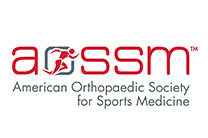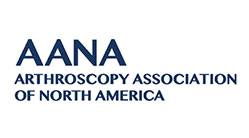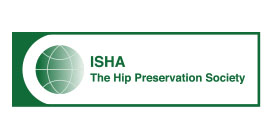What are Orthobiologics for the Hip?
Use of orthobiologics for the treatment of hip injuries or conditions is known as orthobiologics for the hip.
Orthobiologics are natural substances such as cells, tissue, blood components, and growth factors that are used to aid in the treatment of orthopedic injuries or conditions. They may be used to replace lost tissue, stimulate regeneration, accelerate healing, reduce pain and inflammation, and improve joint function. They are mostly obtained from your own body or sometimes from a donor and may be administered in the form of injections or may require a surgical procedure. Orthobiologics may be used alone as conservative treatment or following orthopedic surgery to enhance results.
Hip Anatomy
The hip joint is one of the largest weight-bearing joints in the body, formed by the thighbone or femur and the acetabulum of the pelvis. It is a ball and socket joint with the head of the femur as the ball and the pelvic acetabulum forming the socket. The joint surface is covered by a smooth articular cartilage, which acts as a cushion and enables smooth movements of the joint.
When are Orthobiologics for the Hip Indicated?
Orthobiologics are indicated for the treatment of hip injuries and conditions, such as:
- Early-stage arthritis
- Labral tear
- Trochanteric bursitis
- Avascular necrosis
- Inflamed synovium
- Tendonitis
- Ruptures of tendon and ligament
- Cartilage injuries
Types of Orthobiologics
Some of the different types of orthobiologics include:
- Platelet-rich plasma (PRP): PRP is obtained from your own blood after it has been processed to concentrate platelets and certain white blood cells that enhance healing and reduce inflammation. PRP may be injected directly into the damaged tissue during an outpatient procedure or following repair surgery.
- Bone marrow aspiration concentrate (BMAC): BMAC is obtained after processing bone marrow that is removed from your pelvic bone. BMAC is rich in specialized cells, which produce proteins and growth factors necessary for healing and reducing inflammation. Specialized cells are cells that can develop into a particular type of tissue or organ. While there are various types of specialized cells, the ones located in the bone marrow are regarded as the best at promoting musculoskeletal healing.
- Adipose tissue: Adipose tissue or fat cells have remarkable healing and regenerative properties. They are typically obtained from your waist, processed to remove impurities and inflammatory components, and then injected at the site of injury.
- Amniotic products: Amniotic tissue products such as amniotic membrane and amniotic fluid can reduce inflammation and promote healing in tissues due to their cellular content and presence of hyaluronic acid. They are available as injections or patches. Many researches have indicated that amniotic products are capable of reducing pain and inflammation in joints afflicted with osteoarthritis.
- Autologous cell therapy: In this type of orthobiologic, a blood sample is extracted from a vein in your arm and a sample of bone marrow is obtained from the pelvis through a needle. Subsequently, platelets are isolated from the blood sample and specialized cells are isolated from the bone marrow sample. After preparation, these 2 components are injected into the affected hip region using advanced imaging guidance.
Procedure Involved with Orthobiologics for the Hip
The procedure begins with your doctor extracting specialized cells from your bone marrow. Bone marrow is usually aspirated from your hip region. Your doctor will first clean and numb your hip area. A needle is then introduced into an area of your pelvic bone known as the iliac crest. Bone marrow is then aspirated using a special syringe and the sample obtained is sent to the laboratory. In the laboratory, the aspirate is spun in a machine for 10 to 15 minutes and a concentrated specialized cell sample is separated.
Your doctor then cleans and numbs the affected hip region requiring orthobiologics treatment, and then under the guidance of special x-rays, injects the orthobiologics into the hip region. The whole procedure usually takes less than 1 hour and you may return home on the same day of the procedure.
Post-Operative Care
- You will most likely be able to return to work the next day following your procedure.
- You will need to take it easy and avoid any load-bearing activities for at least two weeks following your procedure.
- You will need to refrain from taking nonsteroidal anti-inflammatory drugs (NSAIDs) for a while as this can affect the healing process of your body.
- A follow-up appointment will be scheduled to monitor your overall progress.
Risks and Complications
Orthobiologics for the hip are a relatively safe procedure; however, as with any procedure, there may be some complications, such as:
- Infection
- Soreness at the injection site
- Muscle or nerve damage
- Immune reaction











